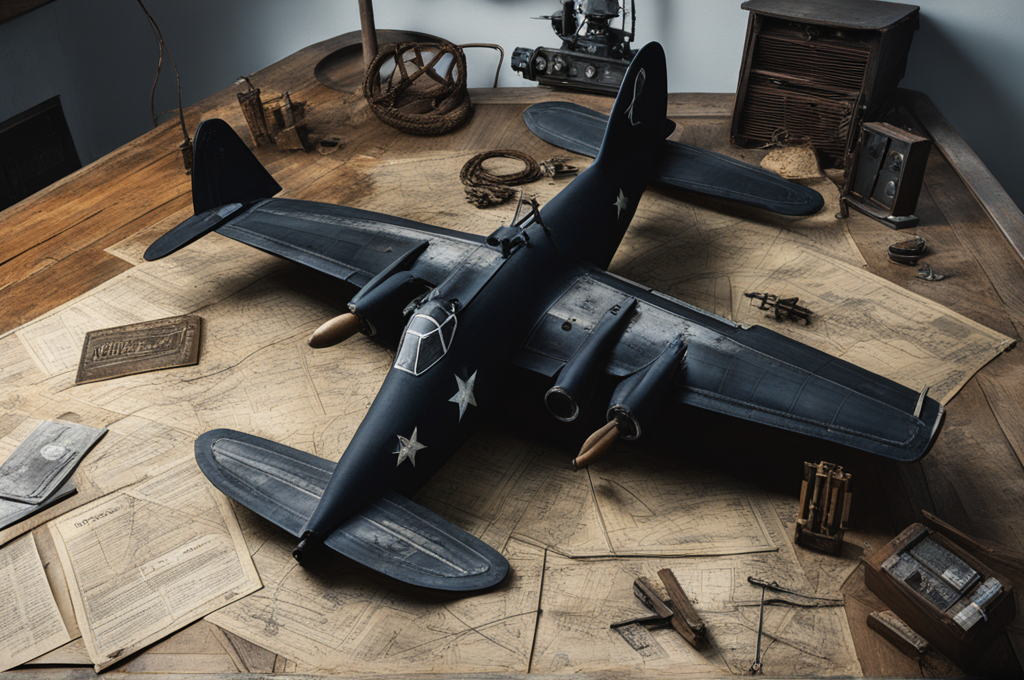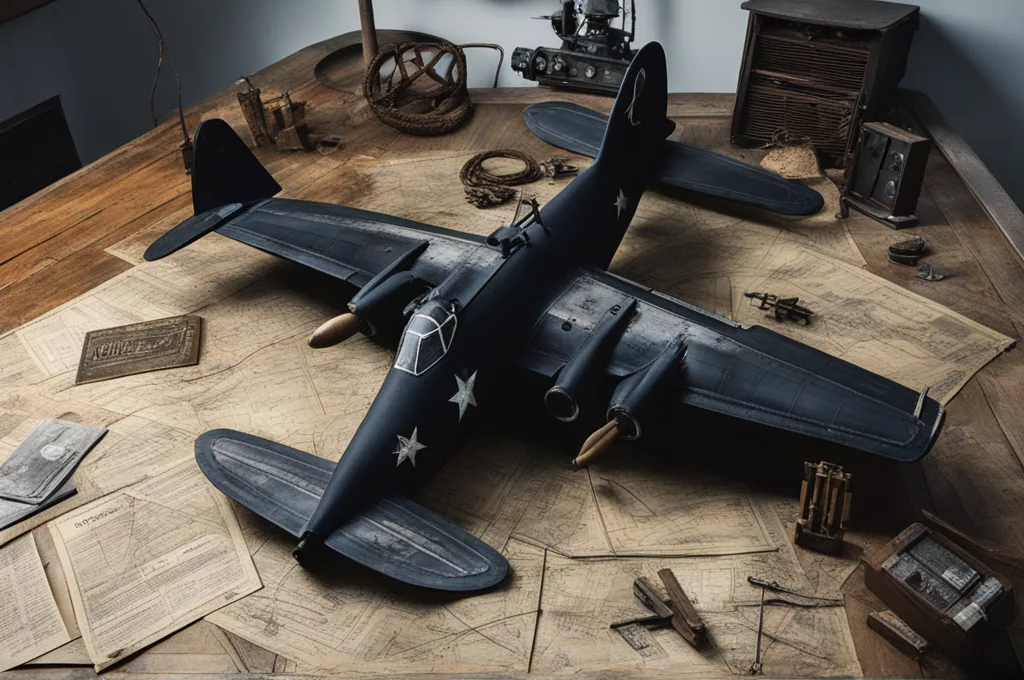 —
—
title: WWII Wreck Diving in the Solomon Islands
Engage with the siren call of the deep, where sunken ships hold mysteries still untold. If you’re an adventurer with a penchant for exploring WWII wrecks, the Solomon Islands offer an alluring playground of submerged treasures.
In the South Pacific, the Solomon Islands boast a treasure trove of shipwrecks from World War II. These submerged vessels are not only relics of the past but also offer an unforgettable experience for divers looking for history submerged beneath the waves.
The Solomons’ rich maritime history left behind a legacy of shipwrecks, providing an unforgettable experience for wreck divers. The Solomons’ strategic position during WWII made it a key battle area. Numerous battles took place in this archipelago, leaving a trail of sunken ships.
**The Lae Baegoe – The Bismarck Sea**
In the Bismarck Sea, the sunken remains of Japanese and Australian forces can be found. The Lae Baegoe is a Japanese transport ship that capsized on April 1, 1943, during a battle with the Australian corvette HMAS Armidale. This shipwreck is a testament to the courage of both nations as they fought for freedom amidst the depths.
**The USS Johnston**
One of the most famous wrecks is the USS Johnston. This US destroyer sank on June 30, 1943, during the Battle of Kula Gulf. The sunken remains lie at around 25 meters below the ocean’s surface. It is home to diverse marine life, including a variety of fish, corals, and even a school of black-tip reef sharks. The Johnston offers a great opportunity for divers to observe and appreciate the life beneath the ocean surface.
**Tin Town**
Not far from the USS Johnston lies Tin Town. Tin Town is the site of the sinking of the Japanese transport ship Shonan Maru No. 3 on November 1, 1943. The shipwreck is covered in soft corals, creating a vivid tableau of colors and textures. It’s a photographer’s dream, a divers paradise, and a unique experience that is sure to leave a lasting impression.
**Hornet Reef**
Hornet Reef, located near Guadalcanal, is home to the USS Hornet. This sunken US aircraft carrier is a sight to behold, resting 120 meters underwater. The aircraft carrier lies partially submerged, providing an awe-inspiring spectacle. The reef surrounding the Hornet Reef is also home to vibrant coral and a diverse marine life, making it an unforgettable destination for photographers and divers alike.
**Preparing for WWII Wreck Diving in the Solomon Islands**
Before diving into these sunken ships, it’s essential to prepare. Make sure you have all the necessary gear and certifications. The Solomon Islands offer both guided and free diving experiences. However, the wrecks can be found at depths ranging from 5 to 120 meters, so it’s essential to be well-trained and equipped.
**The Solomon Islands – A Wreck Diver’s Dream**
The Solomon Islands offer an incredible opportunity to explore the depths of the past. The wrecks are not only a history lesson but also a spectacle of color and life. As you descend, be prepared for a journey that will captivate your senses and leave an indelible mark on your soul.
**Conclusion**
The Solomon Islands beckon with an untold story, waiting to be uncovered beneath the waves. So, let your heart take flight and your breath hold steady, as you embark on a journey into the depths of history. The wrecks of WWII in the Solomon Islands are waiting to reveal their secrets.
—
title: WWII Wreck Diving in the Solomon Islands
Engage with the siren call of the deep, where sunken ships hold mysteries still untold. If you’re an adventurer with a penchant for exploring WWII wrecks, the Solomon Islands offer an alluring playground of submerged treasures.
In the South Pacific, the Solomon Islands boast a treasure trove of shipwrecks from World War II. These submerged vessels are not only relics of the past but also offer an unforgettable experience for divers looking for history submerged beneath the waves.
The Solomons’ rich maritime history left behind a legacy of shipwrecks, providing an unforgettable experience for wreck divers. The Solomons’ strategic position during WWII made it a key battle area. Numerous battles took place in this archipelago, leaving a trail of sunken ships.
**The Lae Baegoe – The Bismarck Sea**
In the Bismarck Sea, the sunken remains of Japanese and Australian forces can be found. The Lae Baegoe is a Japanese transport ship that capsized on April 1, 1943, during a battle with the Australian corvette HMAS Armidale. This shipwreck is a testament to the courage of both nations as they fought for freedom amidst the depths.
**The USS Johnston**
One of the most famous wrecks is the USS Johnston. This US destroyer sank on June 30, 1943, during the Battle of Kula Gulf. The sunken remains lie at around 25 meters below the ocean’s surface. It is home to diverse marine life, including a variety of fish, corals, and even a school of black-tip reef sharks. The Johnston offers a great opportunity for divers to observe and appreciate the life beneath the ocean surface.
**Tin Town**
Not far from the USS Johnston lies Tin Town. Tin Town is the site of the sinking of the Japanese transport ship Shonan Maru No. 3 on November 1, 1943. The shipwreck is covered in soft corals, creating a vivid tableau of colors and textures. It’s a photographer’s dream, a divers paradise, and a unique experience that is sure to leave a lasting impression.
**Hornet Reef**
Hornet Reef, located near Guadalcanal, is home to the USS Hornet. This sunken US aircraft carrier is a sight to behold, resting 120 meters underwater. The aircraft carrier lies partially submerged, providing an awe-inspiring spectacle. The reef surrounding the Hornet Reef is also home to vibrant coral and a diverse marine life, making it an unforgettable destination for photographers and divers alike.
**Preparing for WWII Wreck Diving in the Solomon Islands**
Before diving into these sunken ships, it’s essential to prepare. Make sure you have all the necessary gear and certifications. The Solomon Islands offer both guided and free diving experiences. However, the wrecks can be found at depths ranging from 5 to 120 meters, so it’s essential to be well-trained and equipped.
**The Solomon Islands – A Wreck Diver’s Dream**
The Solomon Islands offer an incredible opportunity to explore the depths of the past. The wrecks are not only a history lesson but also a spectacle of color and life. As you descend, be prepared for a journey that will captivate your senses and leave an indelible mark on your soul.
**Conclusion**
The Solomon Islands beckon with an untold story, waiting to be uncovered beneath the waves. So, let your heart take flight and your breath hold steady, as you embark on a journey into the depths of history. The wrecks of WWII in the Solomon Islands are waiting to reveal their secrets.
—
title: WWII Wreck Diving in the Solomon Islands
Engage with the siren call of the deep, where sunken ships hold mysteries still untold. If you’re an adventurer with a penchant for exploring WWII wrecks, the Solomon Islands offer an alluring playground of submerged treasures.
In the South Pacific, the Solomon Islands boast a treasure trove of shipwrecks from World War II. These submerged vessels are not only relics of the past but also offer an unforgettable experience for divers looking for history submerged beneath the waves.
The Solomons’ rich maritime history left behind a legacy of shipwrecks, providing an unforgettable experience for wreck divers. The Solomons’ strategic position during WWII made it a key battle area. Numerous battles took place in this archipelago, leaving a trail of sunken ships.
**The Lae Baegoe – The Bismarck Sea**
In the Bismarck Sea, the sunken remains of Japanese and Australian forces can be found. The Lae Baegoe is a Japanese transport ship that capsized on April 1, 1943, during a battle with the Australian corvette HMAS Armidale. This shipwreck is a testament to the courage of both nations as they fought for freedom amidst the depths.
**The USS Johnston**
One of the most famous wrecks is the USS Johnston. This US destroyer sank on June 30, 1943, during the Battle of Kula Gulf. The sunken remains lie at around 25 meters below the ocean’s surface. It is home to diverse marine life, including a variety of fish, corals, and even a school of black-tip reef sharks. The Johnston offers a great opportunity for divers to observe and appreciate the life beneath the ocean surface.
**Tin Town**
Not far from the USS Johnston lies Tin Town. Tin Town is the site of the sinking of the Japanese transport ship Shonan Maru No. 3 on November 1, 1943. The shipwreck is covered in soft corals, creating a vivid tableau of colors and textures. It’s a photographer’s dream, a divers paradise, and a unique experience that is sure to leave a lasting impression.
**Hornet Reef**
Hornet Reef, located near Guadalcanal, is home to the USS Hornet. This sunken US aircraft carrier is a sight to behold, resting 120 meters underwater. The aircraft carrier lies partially submerged, providing an awe-inspiring spectacle. The reef surrounding the Hornet Reef is also
